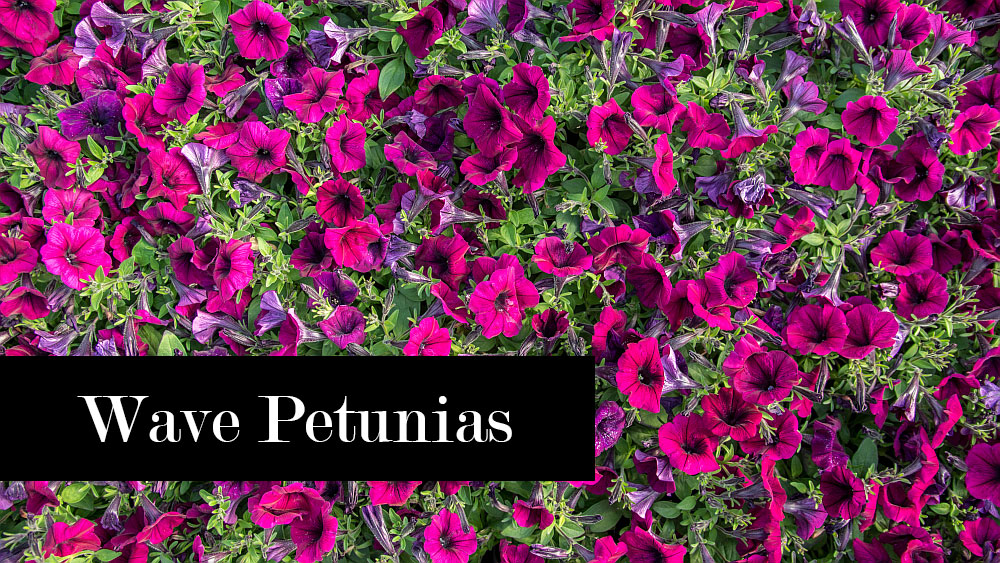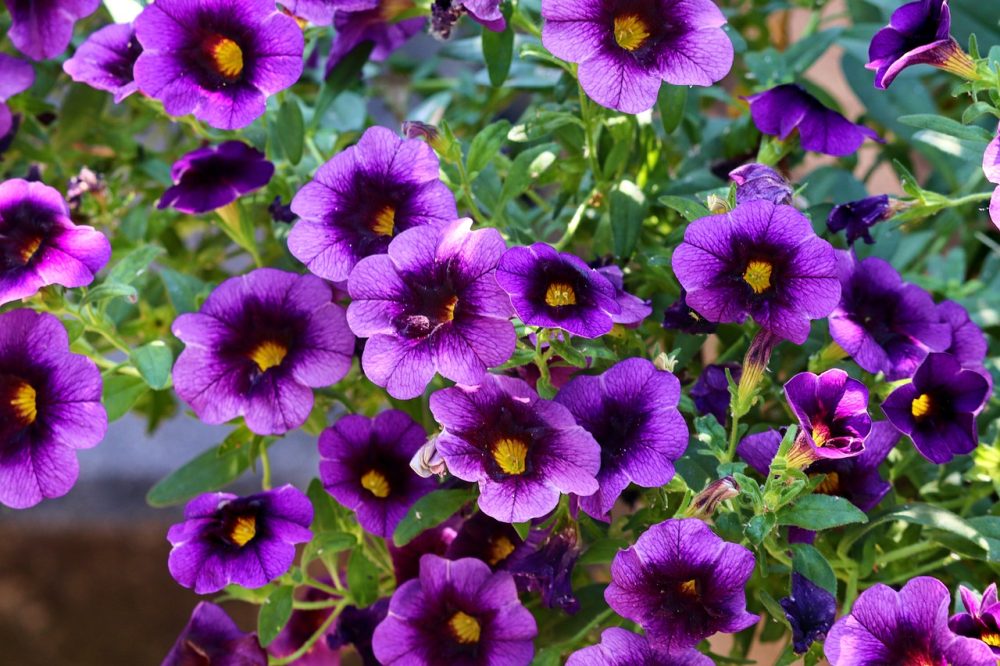Wave Petunia Care: How to Grow and Care For Wave Petunia Plants
When you think of wave petunias, you probably think of the snow-white blooms shimmering in the sunlight from between the bright green leaves, forming a perfect ball of colors and joy. While all of that is true, the truth is, wave petunias come in different colors, and their wavy petals can be pink, red, yellow, and many shades in between.
In the vast petunia family, wave petunias stand out. It’s not just their alluring colors and fuzzy textures that fit right in just about any landscape. Wave petunias are also easy to grow and won’t put you out in terms of maintenance and care. Let’s take a more in-depth look at this whimsical spreading petunia and see why it features in every gardener’s starter pack.
Know your Wave Petunia
While the petunia genus of flowering plants has about 20 species, all the petunias you see around in gardens and lawns are, in fact, hybrids. This might explain why wave petunias combine the traits of the flowering plants originating in South America and trailing vine plants; all rolled in one. They come in different varieties, from trailing to spreading and mounding plants.
But unlike a regular petunia, wave petunias have an abundance of flowers that appear during the growing season, and you don’t have to deadhead them. You can plant them in a hanging basket, a planter, or straight into the ground. You just need to plan your space well since some varieties spread out 2 to 3 feet when fully grown.
The flowers have the shape of a trumpet, and their beautiful colors are a delight for children and adults alike. Wave petunias require minimum maintenance on your part. As long as they have plenty of sunlight, water, and fertilizer, they’re happy spreading their leaves and cheery flowers everywhere they can reach.
When it comes to growing wave petunias, you can go about it in either of two ways: grow the spreading petunia from seeds or from cutting.
How to Grow Wave Petunia from Seed
While growing wave petunia from seed may sound like a lot of work, it’s actually not. All you need is the seeds themselves, a seeding tray, and a soilless mixture. Now it’s essential when purchasing the wave petunia seeds to get pelleted ones. The seeds are too tiny to handle properly, and you might lose most of them while preparing them. Pelleted seeds have their coats on for protection and easy handling.
The seeds don’t do well in solid soil as the roots and offshoots are too fragile to push against the grains of soil. So opt for a soilless mixture such as peat, coco coir, wood chips, perlite, or vermiculite. It doesn’t gel when wet and allows the seeds enough room to germinate.
Just like other petunias, marigolds, and geraniums, wave petunias are considered bedding plants. As annual flowering plants, they are often bedded for their seasonal displays. However, you can collect the dropping seeds from the plants after the flowering season is over and use them to grow new wave petunias the next year.
How to Grow Wave Petunia from Cutting
If you already have a growing wave petunia and you just purchased one from the nursery, you can use cuttings from the plant to grow new wave petunias. It’s a delicate process, but you can grow as many plants as you like without leaving as much as a scar on the original petunia.
To get a cutting from a growing petunia, look for the fine fibers on the stem of the plant. These wispy hairs are itching to grow, and if they come into contact with soil or any dirt, they’ll sprout at a fascinating speed. Cut the fiber at the base and put it in a pot.
You need to consider two things here. The temperature and water are crucial factors that help the sapling develop roots and sprout. Make sure the temperature is between 50 to 60 degrees Fahrenheit and water it regularly. In about 7 to 10 days, you’ll observe roots coming out of the sapling, and soon leaves will grow. You now have a new wave petunia to look after.
Wave Petunia Care
We said that wave petunia were low-maintenance annual plants who didn’t require much in the way of care. However, as all living plants, they need the basic minimum of your attention. To make sure your wave petunias are growing strong and their bloom is at its maximum, you need to pay attention to the following key factors.
Space
Space is more than just a luxury to wave petunias. Both above ground and below the soil, the bedding plant needs plenty of space to grow and blossom. This is why you need to keep an eye on the plants to see if they’re showing any signs of distress as a result of a small container or they’re being overcrowded with other plants.
Root-bound petunias show their distress in the form of fading leaves and drooping flowers. Check if the container is becoming too small to contain the roots and repot the plant in a larger container. If it’s a matter of not enough space above ground, just plant the wave petunia directly in the flowerbeds.
Water
As is the case with many bedding plants, wave petunias need a lot of water. But keep in mind that when it comes to irrigation, it’s actually a balancing act. Yes, wave petunias need plenty of water, but they don’t want to be soaked into soggy bedding. It affects the roots and makes the plant weak.
This is where a well-drainage soil comes in. It protects the plant from being saturated if you give it too much water by mistake. A thick layer of compost keeps your soil well aerated and helps with water retention, so you don’t have to water it every so often.
Make sure the soil doesn’t go dry. Water the plant enough to keep the topsoil wet but not waterlogged.
Sunlight
Another crucial element for the success of your garden variety wave petunia is sunlight. Your flowering plants from South America are used to the full sun. Shade or even partial shade doesn’t suit its blooming needs well, and you won’t get the abundance of bright flowers you hope for or expect.
This is why wave petunias need about 8 hours of daily sunlight. The sun and high temperatures won’t exhaust the plant as long as you water it regularly. These plants tolerate high levels of temperature and humidity and seem to flourish in these conditions.
Fertilizer
Known among gardeners as heavy feeders, wave petunias will astonish you with their enormous appetite for fertilizers. It’s a key factor for a magnificent bloom that lasts for long. So no matter how good your soil is, you still need to supplement your plants with nutrients during their growing season.
Flowering consumes a lot of nutrition, which means the wave petunia, just like most annual plants, needs regular fertilizing. It’s recommended that you give it fertilizers in small doses once every 7 to 10 days. Too much feeding can lead to an explosion of leaves and root growth without the desired bloom.
Organic compost and liquid fertilizers are two of the best options. Choose a slow-release fertilizer that keeps the plant well-fed without overwhelming it with nutrients, which can have adverse effects on its flowering.
Companion plants
As a very competitive and nutrient-hungry plant, wave petunia can just about choke any other plant you put in the hanging basket or planter with it. So make sure the companion plant is just as energetic and vigorous as our wave petunia if you want it to have a surviving change.
Some plants that fit this bill and are known to get along fine with wave petunia include osteospermum, geraniums, million bells, trailing verbena, dracaena, and ipomoea among others. Just keep a watchful eye on how the neighboring plants are doing and move them in separate planters if the competition becomes too fierce.
Pruning
One of the best tricks that wave petunia lovers resort to is pinching the tips of the long branches off. This puts a stop to the growth of the branches but makes the petunia much stockier. This only works when you do that for the very first twigs to grow out of the petunia.
This type of pruning ensures your plant grows healthier and more robust. You won’t have many frail twigs that break at the slightest touch or even in strong winds. A strong wave petunia also produces a healthy bloom.
